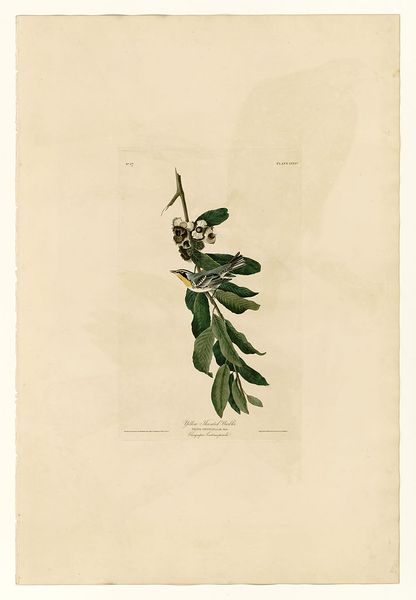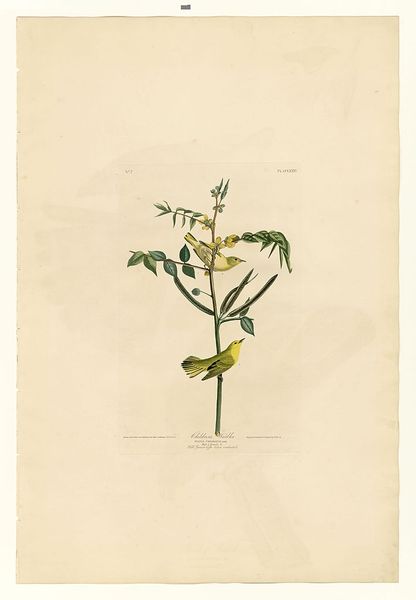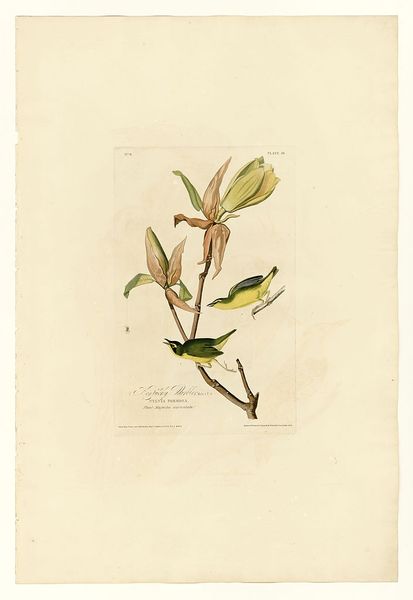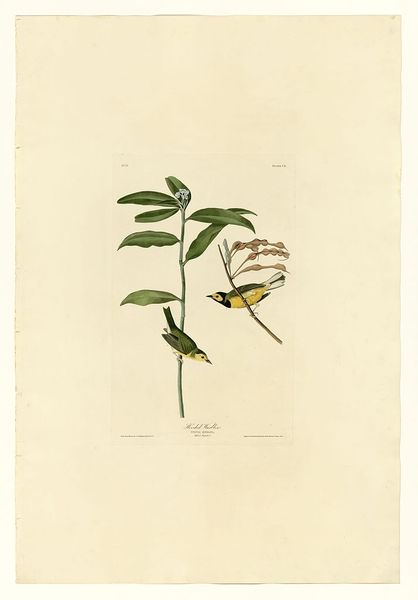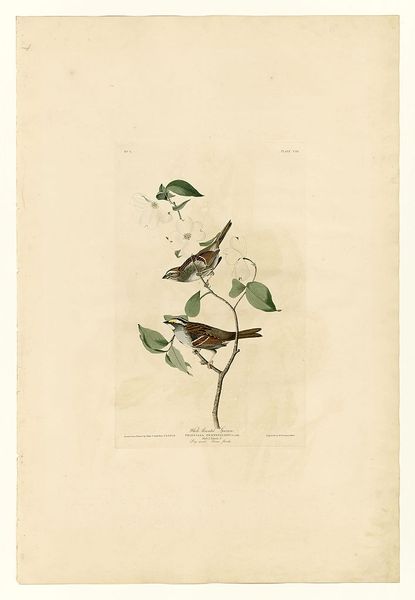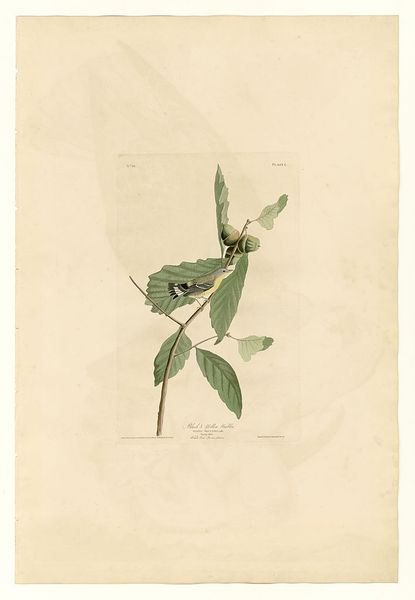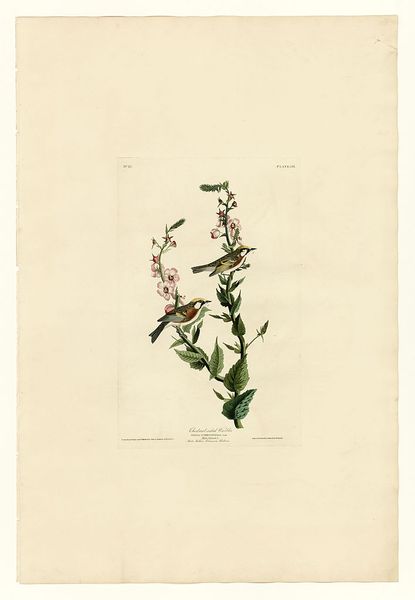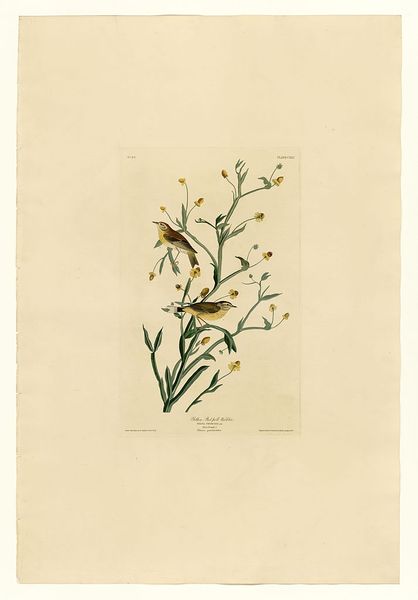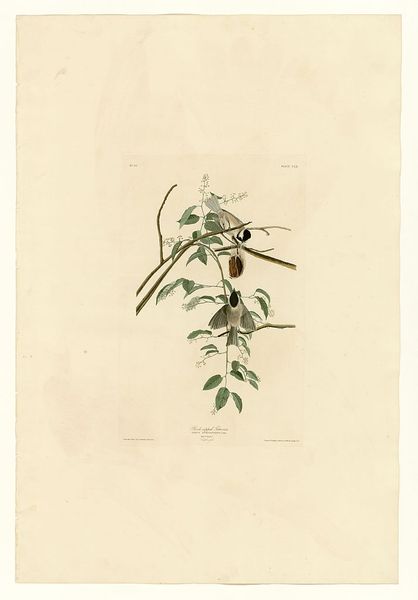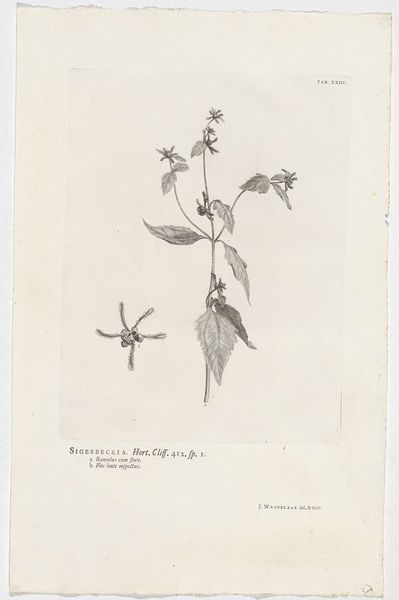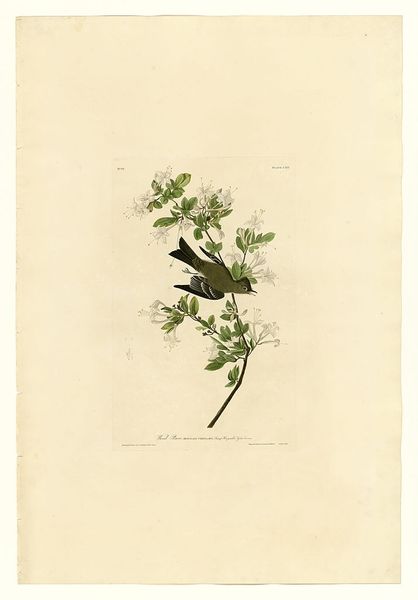
drawing, painting, print, watercolor
#
portrait
#
drawing
#
painting
# print
#
landscape
#
watercolor
#
romanticism
#
watercolour illustration
#
naturalism
Copyright: Public domain
Curator: This is Plate 120, “Pewit Flycatcher” by John James Audubon, realized as a watercolor illustration and print. Editor: The immediate feeling I get is one of stillness, a suspended moment. The colors are delicate, and the birds are almost weightless, perched on the branch. I’m curious about the paper and printing process. Curator: Audubon was a master of imbuing scientific illustration with a vital, almost theatrical, dynamism. The Pewit Flycatcher, in particular, becomes an emblem of nature’s artistry and fragility, perched amidst cotton blossoms, a symbolic connection. Editor: And those cotton blossoms—their presence points to the socioeconomic dimensions embedded within the image. The cotton, so carefully rendered, reminds us of the entangled relationship between the land, its resources, and the human labor that shaped the American landscape, even at the expense of the landscape. Curator: Exactly. Audubon captured North American birds in their habitats, a form of documentation tinged with the romanticism of his era, and so they function almost as icons representing their place and role within the environment. Each bird becomes an ambassador. Editor: The creation of these prints was itself a complex labor—copperplate engraving, hand-coloring. The materiality speaks to a collaborative process far removed from our contemporary modes of image production. Each line etched into the copper has so much impact in how we look at this image, even today. Curator: And it's within those minute details, those lines and color washes, that the symbolic weight resides. The specific pose of the birds, their gestures, invite reflection on how humanity interprets its relationship to the natural world. A visual meditation, of sorts. Editor: Right, Audubon's prints reveal a fascinating intersection of scientific inquiry and artistic expression that can teach us about material practices as well as cultural attitudes towards natural resources in 19th-century America. The very production methods of the prints and watercolor give the birds themselves so much cultural history. Curator: Reflecting on it, Audubon delivers something more than just mere observation; it is almost an archive of cultural and emotional associations. Editor: I see it more now, the production process really is a time capsule about ecological and social labor—the means and materials giving rise to the meaning, now preserved for us.
Comments
No comments
Be the first to comment and join the conversation on the ultimate creative platform.
